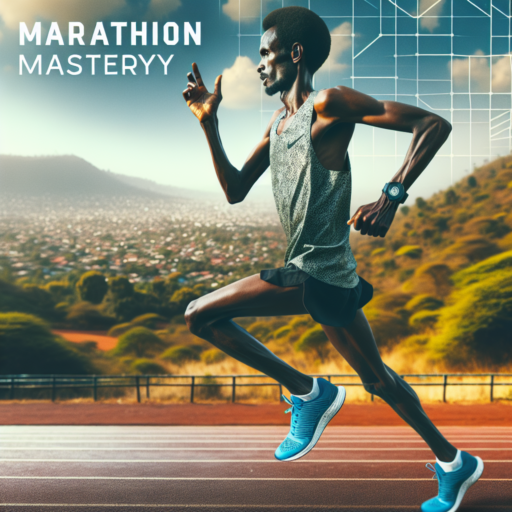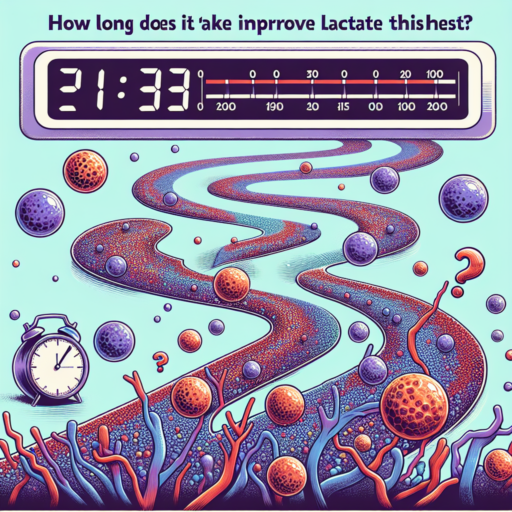Introducing Eliud Kipchoge: The Epitome of Perfect Running Form
In the world of long-distance running, Eliud Kipchoge stands out not just for his extraordinary achievements but for something that every runner, from beginner to elite, strives to perfect: running form. Kipchoge’s technique is a masterclass in efficiency, each element of his form coming together to create a symphony of athletic prowess. Observing Kipchoge in motion is witnessing the embodiment of decades of dedicated practice and a deep understanding of biomechanics.
One key aspect of Kipchoge’s form is his posture. Standing tall, with a slight forward lean originating from the ankles, Kipchoge maintains an alignment that is both relaxed and powerful. This positioning allows for optimal lung capacity and minimal energy waste, a critical advantage in endurance racing. Coupled with his steady, metronomic cadence, Kipchoge expertly balances speed and stamina, demonstrating a perfect harmony between fast turnover and stride length.
Another critical component is his arm swing and foot strike. Kipchoge’s arms move efficiently, propelling him forward with minimal lateral movement, thus conserving energy and maintaining momentum. His foot strike, predominantly midfoot, showcases an exquisite balance, minimizing braking forces and maximizing forward propulsion. This precision in movement is not just a testament to Kipchoge’s talent but also an insight into his meticulous focus on technique refinement.
Together, these elements forge Kipchoge’s legendary running form. They reveal a runner who not only understands the nuances of biomechanics but also applies them in the relentless pursuit of greatness. Kipchoge’s form is not just an example for aspiring runners; it’s a case study for experts in the field, demonstrating what’s possible when talent meets unparalleled dedication to the art and science of running.
No se han encontrado productos.
The Fundamentals of Kipchoge’s Running Technique
Eliud Kipchoge, the Kenyan long-distance runner, has revolutionized the way we think about running. At the core of his success lies a distinctive running technique that has propelled him to the forefront of marathons worldwide. This technique is a tapestry of precision, discipline, and years of refinement.
Optimal Body Alignment and Efficiency
One of the pillars of Kipchoge’s technique is his optimal body alignment. Observers note his impeccable posture, which maintains a straight line from his head through his spine to his legs. This alignment is crucial for minimizing air resistance and ensuring that each stride propels him forward with maximum efficiency. The economy of movement Kipchoge achieves through this technique is thought to be a key factor in his ability to sustain high speeds over long distances.
Consistent Pace and Rhythmic Breathing
Kipchoge’s ability to maintain a consistent pace is another cornerstone of his running philosophy. This consistency allows his body to adapt to the rigorous demands of long-distance running, making efficient use of his energy reserves. Coupled with his rhythmic breathing technique, Kipchoge can optimize oxygen intake, further enhancing his endurance and performance. This rhythm and pace strategy prevents early fatigue and supports his mental focus throughout the race.
How Kipchoge’s Form Contributes to His Marathon Success
Understanding the remarkable success of Eliud Kipchoge in marathons requires an in-depth look at his running form, which plays a critical role in his sustained performance and records. Kipchoge, often referred to as the greatest marathon runner of all time, has a particularly efficient running technique that has been meticulously refined over years of training. This efficiency is a cornerstone in minimizing energy expenditure over the 26.2 miles of a marathon, allowing him to maintain a pace that is unreachable for most of his competitors.
One key aspect of Kipchoge’s form that contributes to his marathon success is his consistent cadence and stride length. Unlike many runners who vary their stride and cadence significantly during a marathon, Kipchoge’s form remains remarkably consistent. This uniformity ensures that he is running at his most efficient at all times, preventing unnecessary fatigue and maximizing his endurance capabilities. It’s this precise consistency in his form that also aids in reducing the risk of injury, which is crucial for longevity in any athlete’s career but especially in endurance sports.
Another element to consider is Kipchoge’s posture and body alignment during a run. His upright stance, coupled with a slight forward lean from the ankles, allows for optimal lung capacity usage and efficient breath control. This posture is also beneficial for ensuring a smooth transfer of energy from his body to the ground, contributing to his exceptional ability to maintain speed over long distances. Moreover, Kipchoge’s disciplined focus on maintaining a relaxed shoulder and arm position further reduces energy waste, proving that every aspect of his form is fine-tuned for peak marathon performance.
Breaking Down the Key Elements of Kipchoge’s Running Form
When discussing elite marathon performance, Eliud Kipchoge’s running form is often hailed as a pinnacle of efficiency and elegance. This article delves into the fundamental aspects that make Kipchoge’s form both unique and effective, offering insights into how amateur runners can draw inspiration from his technique.
Optimal Stride Length and Cadence
The core of Kipchoge’s running efficiency lies in his mastery of stride length and cadence. Unlike many runners who overstride, Kipchoge maintains a balanced stride that minimizes ground contact time and maximizes forward motion. This optimal combination reduces energy expenditure and increases speed, a key factor in his marathon success.
Superior Running Economy
Kipchoge’s running economy is a product of years of specific training and fine-tuning his running form. By keeping his upper body relaxed and maintaining a forward lean, he ensures that his energy is directed forwards rather than wasted. This energy efficiency is crucial in the later stages of a marathon, where maintaining form becomes increasingly challenging.
Efficacious Use of Arms
An often-overlooked aspect of Kipchoge’s form is his use of arms. He keeps his arms swinging in a controlled, relaxed manner, which not only aids in balance but also contributes positively to his forward propulsion. This detail, seemingly minor, plays a significant role in the coordination and rhythm of his entire running mechanics.
Eliud Kipchoge’s Training Regimen: Building an Efficient Running Form
Understanding Eliud Kipchoge’s training regimen is key for any runner aspiring to improve not just their speed, but also their running efficiency. Kipchoge, considered one of the world’s greatest marathon runners, has honed a training routine that focuses intensely on building a running form that conserves energy while maintaining a fast pace. This approach has been crucial in his record-breaking performances.
One of the core components of Kipchoge’s training involves focusing on high-altitude training. This element of his regimen is designed to enhance his aerobic capacity and endurance. By training at elevations where oxygen is scarcer, his body adapts to utilizing oxygen more efficiently. Moreover, Kipchoge places a significant emphasis on strength and conditioning exercises aimed at improving core stability and leg strength. These exercises contribute to a more efficient running form by enabling stronger and more resilient muscle performance.
Another pivotal aspect of Kipchoge’s routine includes recovery strategies. Understanding that recovery is just as important as the training itself, he incorporates thorough cool-down sessions, adequate nutrition, and sufficient sleep into his regime. These elements ensure his body repairs and strengthens, ready for the next day of training. Additionally, Kipchoge’s approach to mental preparation, involving meditation and visualization techniques, further exemplifies the holistic nature of his training regimen.
Comparing Kipchoge’s Technique with Other Elite Marathon Runners
When breaking down the marathon technique of Eliud Kipchoge, the world record holder, against other elite marathon runners, distinct features of his racing strategy and physical execution come to light. Kipchoge’s approach to marathon running is not just about his physical abilities but also his strategic acumen. This juxtaposition offers a unique perspective on what sets him apart in the pantheon of long-distance runners.
One of the most prominent aspects of Kipchoge’s technique is his consistent pacing. Unlike some of his contemporaries who might fluctuate their speed dramatically during different segments of the race, Kipchoge maintains a remarkably even pace. This steadiness allows him to conserve energy more efficiently, reducing the onset of fatigue that many runners face in the later stages of a marathon. This technique contrasts sharply with runners who adopt a «surge» strategy, aiming to break the competition’s spirit with sudden bursts of speed.
Another critical element in Kipchoge’s arsenal is his running economy. Studies have shown that he utilizes oxygen more efficiently than most athletes, even within the elite marathoner community. His upright posture and relaxed stride minimize energy expenditure, enabling him to maintain his incredible speed over the marathon’s 42.195 kilometers. Other elite runners have also been noted for their efficient running styles, but Kipchoge’s optimal combination of biomechanics and aerobic capacity is viewed by many experts as a benchmark in the sport.
Practical Tips to Emulate Kipchoge’s Running Form in Your Training
Emulating the running form of the marathon world record holder, Eliud Kipchoge, can bring significant improvements to your own running efficiency and speed. Kipchoge’s technique is a pinnacle of years of training, focus, and discipline. However, certain aspects of his form can be adapted by amateur runners aiming to enhance their performance. Here are some practical tips to incorporate Kipchoge’s running form into your training.
Focus on Your Posture: One of the key elements of Kipchoge’s running form is his impeccable posture. He maintains a straight, yet relaxed, alignment from his head down to his feet, which minimizes air resistance and maximizes his energy efficiency. To incorporate this into your training, regularly remind yourself to run tall, keeping your shoulders relaxed and avoiding slouching. This can help in reducing fatigue and improving your running economy.
Optimize Your Cadence: Kipchoge’s cadence, or the number of steps he takes per minute, is another vital component of his success. A higher cadence can reduce the time your feet spend on the ground, leading to faster and more efficient running. Aim to increase your cadence by focusing on taking quick, light steps, as opposed to longer, bounding strides. Listening to music with a fast beat can help maintain a consistent, higher cadence during your runs.
To effectively emulate Kipchoge’s running form, consistency in practice is crucial. Begin by incorporating these changes gradually into your training schedule, focusing on one element at a time. This methodical approach can lead to sustainable improvements and perhaps, inch you closer to the efficiency and grace exhibited by Kipchoge himself.
The Role of Footwear in Enhancing Kipchoge’s Legendary Running Form
Understanding the impact of footwear on Eliud Kipchoge’s running prowess requires delving into the specifics of how technology and design align to bolster his form. Kipchoge’s choice in shoes marks a significant factor in his strategy for breaking records. This footwear is meticulously engineered to provide not only unparalleled comfort but also to enhance the efficiency of each stride. The integration of advanced cushioning and propulsion technologies plays a critical role in diminishing energy loss and improving overall performance.
The synergy between Kipchoge’s natural talent and the innovative features of his running shoes exemplifies a perfect marriage of athlete and equipment. Key elements such as the shoes’ weight, the type of foam used in the midsole, and the geometry of the sole are tailored to complement his unique running mechanics. Thus, they enhance his legendary form by optimizing ground contact time and maximizing energy return. These adjustments ensure that Kipchoge’s movements are not just protected but propelled, allowing him to maintain an efficient and fluid motion over the course of a marathon.
Furthermore, the significance of aerodynamics in Kipchoge’s footwear cannot be understated. The design of his shoes incorporates features that minimize air resistance, which is particularly crucial during long-distance runs where even the slightest inefficiency can alter the outcome. This attention to detail demonstrates how footwear functions as an essential component in achieving extraordinary feats, reinforcing Kipchoge’s status in the realm of long-distance running. The adaptability and technological advancement of his shoes serve not only as a testament to Kipchoge’s legendary form but also as a beacon for future innovations in athletic footwear.
Scientific Insights: What Makes Kipchoge’s Running Form So Effective?
The remarkable successes of Eliud Kipchoge in long-distance running have not only shattered world records but also sparked widespread interest in the mechanics behind his unprecedented endurance and speed. Central to this intrigue is Kipchoge’s running form, a subject that has been rigorously analyzed by sports scientists and coaches alike. What emerges from this scrutiny is a combination of factors, both innate and meticulously refined, that contribute to his exceptional performance.
Economy of Movement stands out as a pivotal aspect of Kipchoge’s running form. His uncanny ability to maintain a consistent pace with minimal energy expenditure is a testament to his optimal biomechanics. Observations reveal that Kipchoge’s upright posture, slight forward lean, and low ground contact time enhance his running efficiency. This efficiency is further augmented by his high cadence, defined as the number of steps taken per minute, which minimizes energy lost in vertical oscillation and maximizes forward propulsion.
Another element critical to Kipchoge’s success is his Footstrike Pattern. Renowned for his midfoot striking, a technique where the ball of the foot hits the ground first, Kipchoge is able to achieve a smoother, more natural transition through his gait cycle. This method is often juxtaposed against the heel-striking pattern seen in many recreational runners, which is associated with higher impact forces and, consequently, a greater risk of injury. The efficiency of his footstrike complements his overall running mechanics, allowing for a fluid and harmonious stride.
Future Prospects: Can Kipchoge’s Form Influence the Next Generation of Runners?
Eliud Kipchoge, hailed as the world’s greatest marathoner, has shattered records and redefined what athletes believed was possible in long-distance running. As the next generation of runners looks up to his monumental achievements, the question arises: how might Kipchoge’s form and discipline influence aspiring athletes?
Observing Kipchoge’s training regimen, meticulous attention to diet, recovery, and mental preparation, young athletes can glean valuable lessons on achieving peak performance. His holistic approach underlines the essence of consistency, resilience, and mental fortitude—qualities that are indispensable for any athlete aiming for greatness. Furthermore, Kipchoge’s advocacy for sustainable running practices and a balanced lifestyle presents a viable model for upcoming runners who aim to excel in their careers while maintaining their health and well-being.
Kipchoge’s innovative techniques, such as his famed pacing strategy and his use of cutting-edge technology for performance gear, have already sparked discussions within athletic communities. These aspects offer a blueprint that, when adapted, could potentially uplift the standard of running and foster a new era of record-breaking athletes. As such, the influence of Kipchoge’s form extends beyond physical prowess, encompassing a mindset geared towards continuous improvement and breaking barriers.



